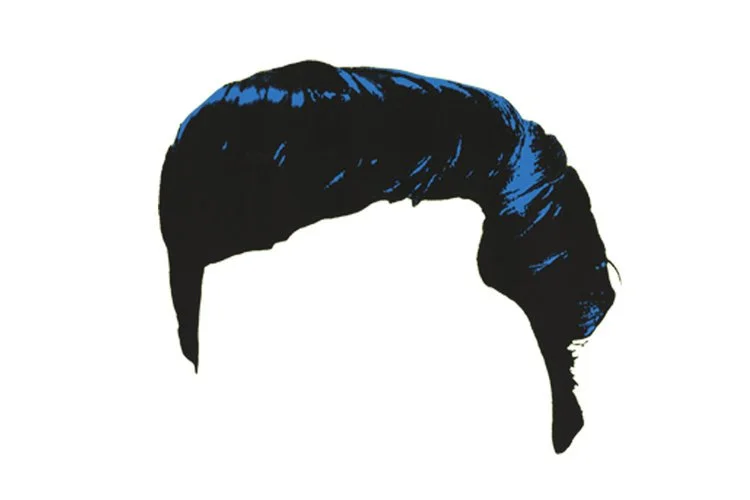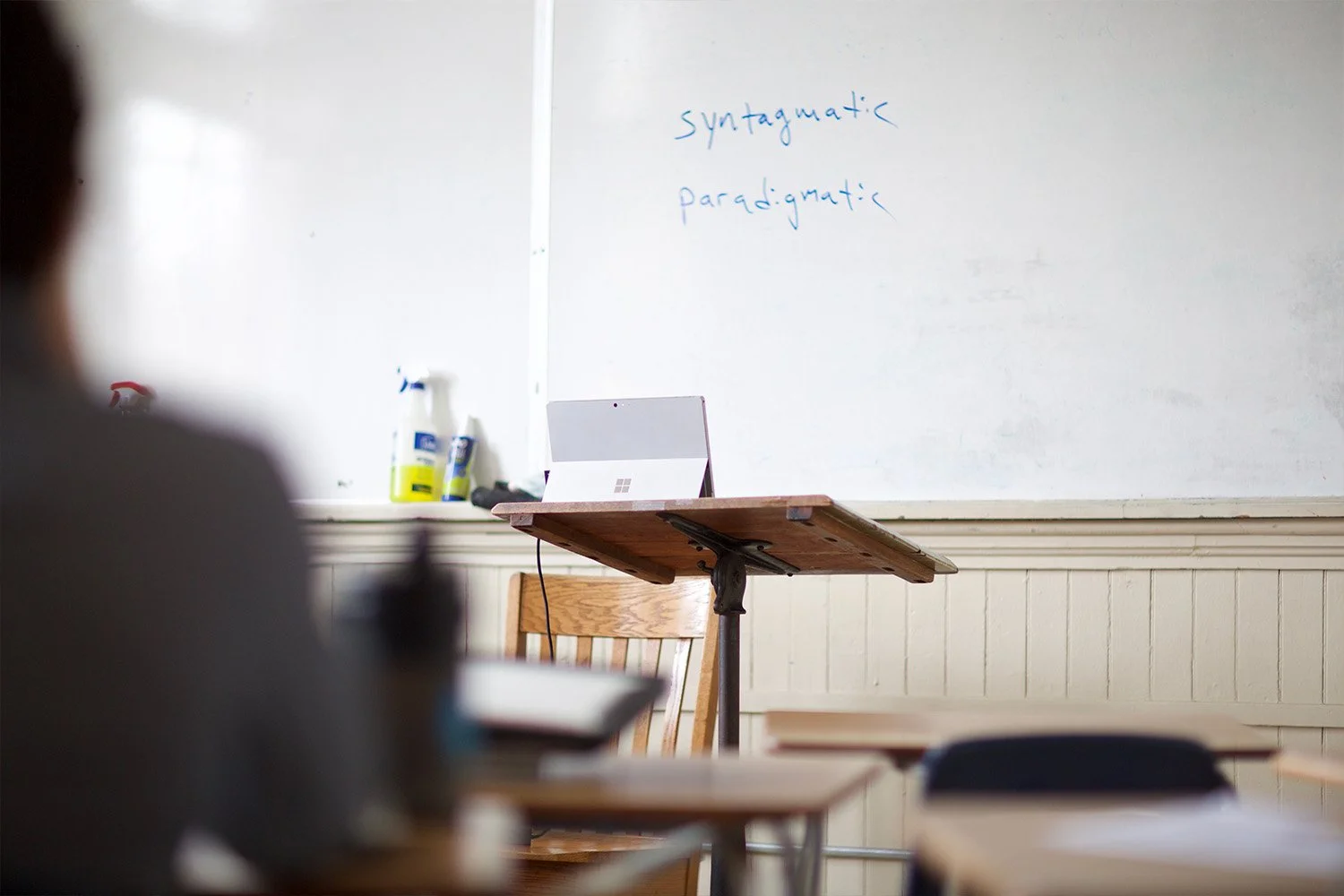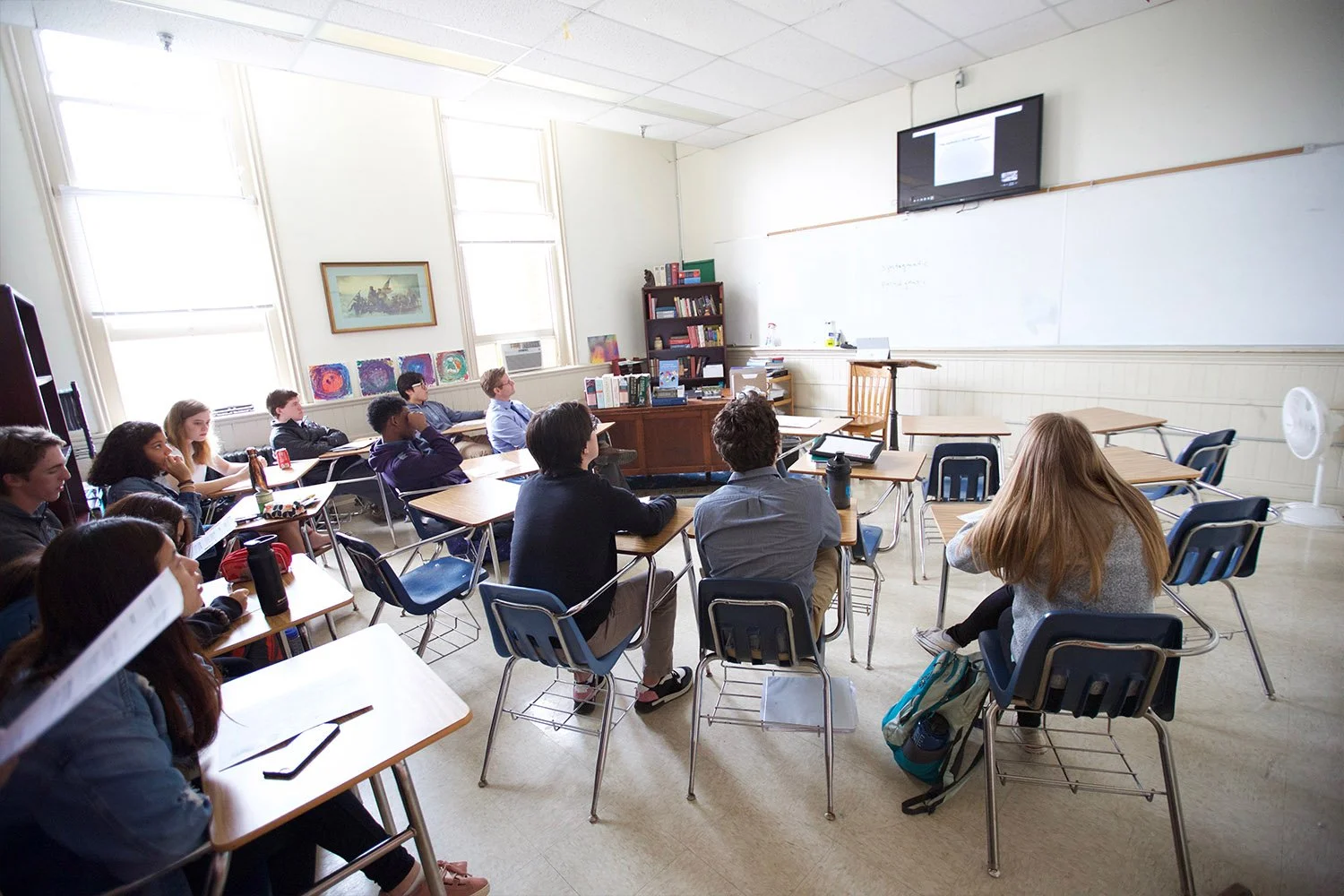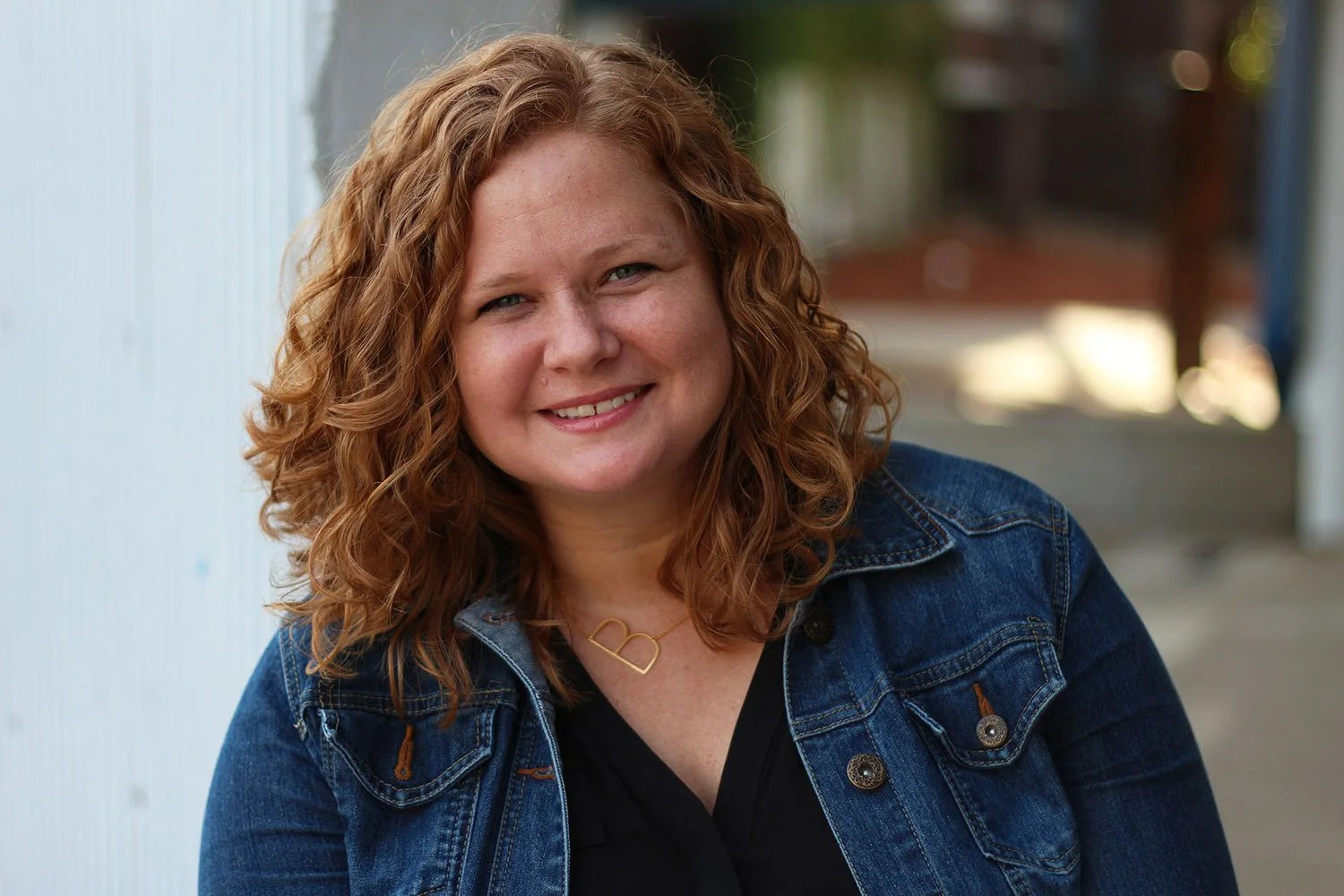All Hands on Deck
What can Elvis Presley’s hair teach us about rhetoric and the future of pedagogy? Students in Dr. Jason Nabi’s Advanced Placement Language and Composition class found out recently during an out-of-the-ordinary class. We sat down with Dr. Nabi to learn more.
Q. Your AP Language and Composition class was treated recently to a terrific class on visual rhetoric taught by your younger sister, a Professor of Graphic Design and Digital Media at the University of North Florida. What was the lesson about?
A. The lesson was about seeing beyond the surface of images, in order to read deeply into them. What a crucial lesson in a media-saturated world! We are bombarded hourly with images, and the makers of those images usually want something from us. Our students learned about the tools of persuasion: how to be alert to them, but also how to use them. At Miller, teaching students how to be effective communicators is a primary goal. Through this particular lesson, they got to approach this idea from a very different angle, and it was empowering for them to see the world in an unfamiliar light.
Q. Remarkably, your class was sitting comfortably in Old Main, and the professor was in her office at the University of North Florida. Tell us about your use of technology to facilitate this learning experience.
A. The technology that the webinar is built on is pretty amazing, when you think about it. My students got to see and chat with my sister, and she lives 800 miles away! Also remarkable is that the technology was all already there and waiting -- from the internet bandwidth, to the flat-screen in the classroom, to the video conferencing software that's a built-in feature of an everyday web browser.
Q. Students were engaged and enthusiastic during the class, and the lesson was very well delivered by the professor. As Director of Academics, do you see webinars and remote learning as a useful tool for teachers and students at MSA? What are some of the keys to making it successful?
A. While technology can make the world smaller, it's people who ultimately expand the mind. Learning comes from relationships. Everyone knows that students need to pay attention to the teacher, but the best teachers are paying attention to the students. Great teachers are constantly "reading the room" and responding to students' energy and interest levels.
Before the lesson, I assumed that a webinar would all but eliminate that interpersonal dynamic. If you've ever had an awkward skype session, you know what I mean! But seeing my sister in action, I realized that the unique challenge of the video chat format is itself a key to great teaching: it's got to be an engaging conversation.
So many of our teachers at Miller know this intuitively: that teaching isn't about what they know, but what the students know. They are having great conversations about great ideas every day in their classrooms, and I think these would definitely translate into classrooms hundreds of miles away. Next year we'll be exploring every opportunity to bring in outside experts, but we will also look into broadcasting our faculty's expertise far and wide.
Q. It is clear that sharing expertise with enthusiasm runs in the Nabi family. Do you and your sister discuss teaching methods and lesson ideas?
A. We both majored in English, but then took very different grad-school paths. It's exciting to find intersections between such different fields. Even when what we teach is so very different, where we are alike is in our style and approach. Teaching is a conversation, but it's also a performance. What better way to prepare for the "show" than through decades of sibling rivalry!
Q How about a mini-lesson for our readers at home?
A. I thought you'd never ask! In rhetoric, metonymy is the substitution of one term with another term that is closely related. For example, in the expression "all hands on deck," a part of the body is being substituted for the whole body, in that the "hands" represent the whole sailor. This makes for a more vivid description, because it invites the listener to fill in the blank and to participate in the speaker's thought process.
Metonymy can also work visually. In the image below, the play being advertised is unmistakably about Elvis Presley, even though he isn't named anywhere on the poster. His iconic pompadour is the part being substituted for the whole:
Poster, Him, 1994; Designed by Paula Scher (American, b. 1948)
Can you figure out how metonymy is at work in the familiar image below? Submit your answer below. The first five correct answers receive a MSA decal.








